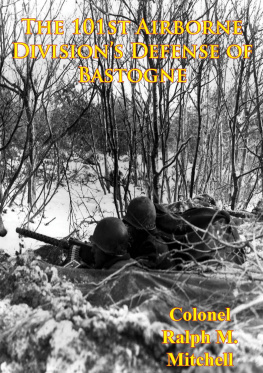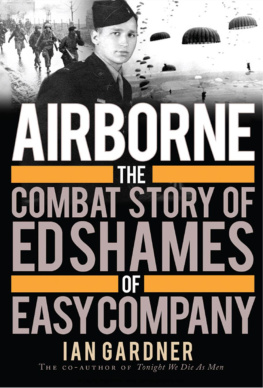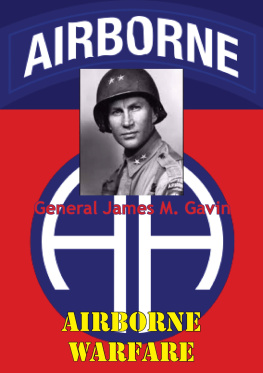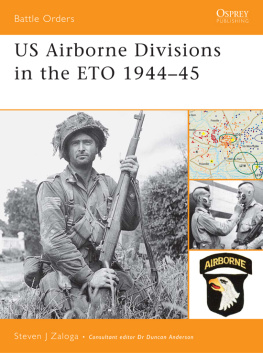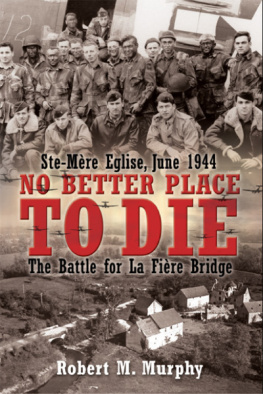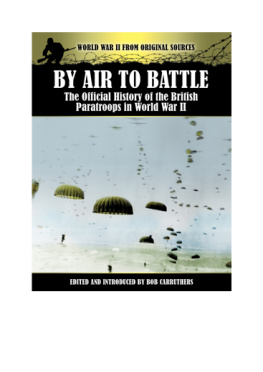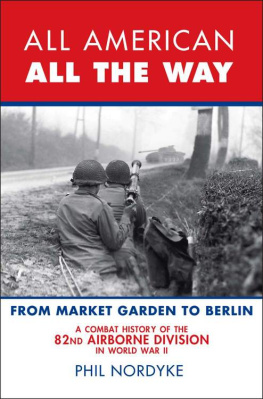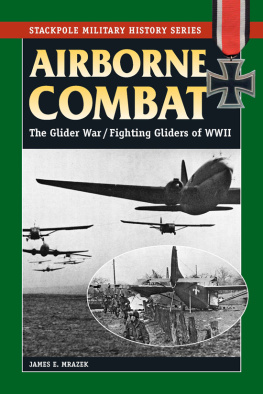1990 by the University Press of Kansas
All rights reserved
Map on page Putnam Publishing
Maps on pages are reprinted with permission of Charles Scribners Sons, an imprint of Macmillan Publishing Company, from Airborne at War, by Napier Crookenden. Copyright 1978 Napier Crookenden
Published by the University Press of Kansas (Lawrence, Kansas 66045), which was organized by the Kansas Board of Regents and is operated and funded by Emporia State University, Fort Hays State University, Kansas State University, Pittsburg State University, the University of Kansas, and Wichita State University
Library of Congress Cataloging-in-Publication Data
Gabel, Kurt, d. 1978.
The making of a paratrooper.
(Modern War Studies)
Includes bibliographical references.
1. World War, 1939-1945Aerial operations, American. 2. United States.
ArmyParachute troopsHistoryWorld War, 1939-1945. I. Mitchell,
William C. II. Title. III. Series.
0769.347.033 1990940.54497389-24907
ISBN 978-0-7006-2137-8 (alk. paper)
ISBN 978-0-7006-2176-7 (ebook)
British Library Cataloguing in Publication Data is available.
Printed in the United States of America
10 9 8 7 6 5 4 3 2 1
The paper used in this publication meets the minimum requirements of the American National Standard for Permanence of Paper for Printed Library Materials Z39.48-1984.
Foreword
Even before the echoes of the last round died away and the ink dried on the Japanese surrender document signed on the deck of the USS Missouri, the process of celebrating and dissecting Americas participation in World War II began. During the fifty years since Hitlers attack on Poland plunged Europe into war, the barrage of memoirs, novels, films (and now television miniseries), documentary collections, technical treatises, popularly written histories of battles and campaigns, and scholarly studies has rarely slackened. Far more is known about this conflictthe debates over grand strategy and alliance politics, the details of theater operations and small unit actions, the attitudes and outlooks of individuals as disparate as General George S. Patton, Eleanor Roosevelt, Private Slovik, and Rosie the Riveter, and the characteristics and performance in combat of every item of equipment employed by the armed forces of the United Statesthan about any other era in Americas history with the possible exception of the Civil War.
When a work such as Kurt Gabels autobiographical account of his wartime experiences comes along, nearly five decades after these events, the shock of encountering something new, of obtaining fresh and important insights, is thus intensified. This is the story of a young man inducted into the U.S. Army in 1943 and what he experienced in the barracks, on the rifle range, on the parade ground, and in the mess hall. It is the story of how Gabel became first a soldier and then a paratrooper. It would thus seem familiar, another of the many fascinating personal chronicles of combat during World War II.
But Kurt Gabels narrative differs in two respects from most autobiographies and told-to tales. First is its focus on the cycle of trainingthe stages by which Gabel was transformed from raw if eager inductee to proficient combat infantryman/paratrooper and how the unit to which he ultimately won assignment (A Company, 1st Battalion, 513th Parachute Infantry Regiment) metamorphosed from an agglomeration of young recruits, unfamiliar with each other and with their own capabilities, into a finely honed, confident, cohesive military organization. Surprisingly few of the flood of personal narratives of World War II military service give much attention to the phenomena of basic training, specialized training courses, and the efforts to prepare squads, platoons, companies, battalions, and regiments to enter combat. Aside from observationsenshrined by postwar films as platitudesabout first encounters with other GIs with odd accents, the tough-but-kind-hearted drill sergeant, the bad food, the obstacle course, and the first weekend pass, these accounts typically hurry to embarkation, the subjects baptism by fire, and the hurly-burly of battle. This is understandable because the authors were in almost all cases civilians for whom the one uniquely memorable aspect of military life was combat. What came before or after the experience of seeing the elephant was to them of little enduring importance.
Reinforcing the idea of combat as a singular experience and one essentially unrelated to individual or unit training was the typical U.S. battalion, regimental, or divisional history. Rushing through the organizational and training phases, these historiesmostly published in the years immediately after World War IIemphasized a detailed chronological narrative of the units participation in battle. Notably, among the first of the Green Books (the U.S. Armys official history of World War II) to appear were two compilations based on wartime studies: The Organization of Ground Combat Troops (1947), by Kent Roberts Greenfield and Robert R. Palmer, and The Procurement and Training of Ground Combat Troops (1948), by Robert R. Palmer, Bell I. Wiley, and William R. Keast. These works focused on the vital importance of recruitment, personnel selection, organization, and training, logistical support, troop deployment, and replacement and unit reconstitution policies, especially for a force built from the ground up as was the U.S. Army in World War II. But the lessons these works offered were not followed either by historians or by the army establishment, principally, it appears, because their implementation would have been costly and politically awkward. Only in the past decade have the direct links between individual and unit training, personnel turbulence (with consequent effects on morale and unit cohesion), and combat performance come to the fore with the publication of such works as Martin Van Crevelds Fighting Power: German and U.S. Army Performance, 19391945 (1982), William P. Leinbaugh and John D. Campbells The Men of Company K (1985), and John Sloan Browns Draftee Division: A Study of the 88th Infantry Division, First All-Selective Service Division into Combat in World War II


